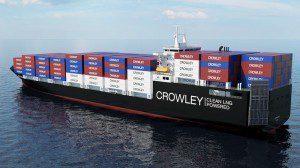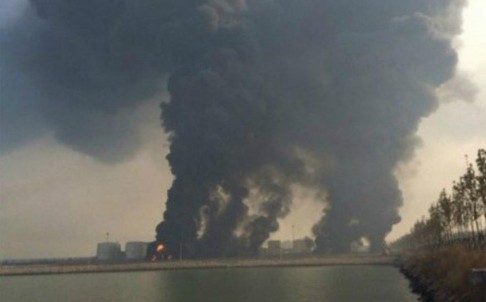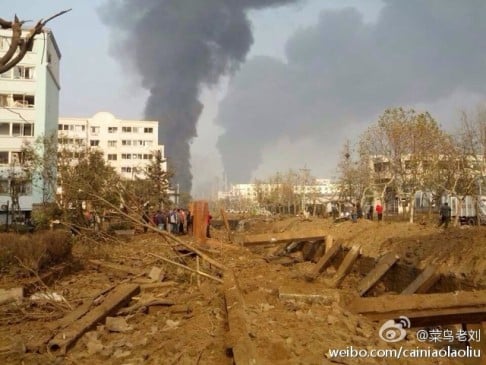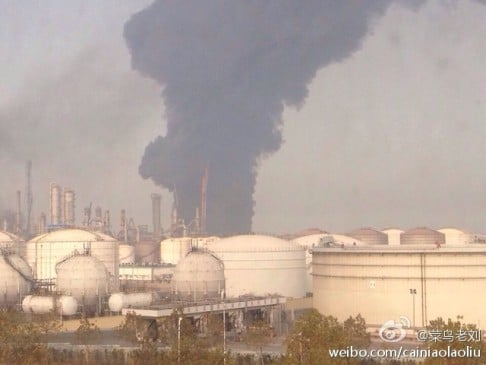Posted - November 19, 2013 - By
Thom Shanker & Eric Schmitt - New York Times
WASHINGTON — Unable to find a country willing to dispose of Syria’s
chemical weapons, the United States is considering plans to place the
chemical components of the weapons on a barge where they would be
dissolved or incinerated, according to senior American officials.
The two systems under review are intended to destroy the precursor
materials that are designed to be combined to form chemical munitions.
Syria’s smaller arsenal of operational chemical weapons would be
destroyed separately, officials said.
Officials from the Organization for the Prohibition of Chemical Weapons,
which is operating in Syria to locate and identify the weapons, would
monitor the destruction, which would be carried out following safety
standards set by legislation in the United States and the European
Union, according to officials familiar with the proposal. Officials did
not say whether any chemical residue would be dumped in the ocean.
The system could be operational in 75 days.
The seaborne options have received more serious consideration after
Albania on Friday turned down an appeal by the United States to destroy
the weapons on its territory; the decision followed street protests by
thousands of Albanians. Norway rejected an earlier request, saying it
did not have the expertise or the facilities to destroy the weapons. The
issue caused a major political dispute there as well.
Under one plan, five incinerators operating at temperatures of 2,700
degrees aboard the barge would be able to destroy all of Syria’s most
serious precursor materials for chemical weapons in less than 60 days.
Officials said the byproducts would be harmless salts and other solids.
No American companies, ships or personnel would be involved under this
proposal, although officials said it was possible that the American
military would help provide security in the international waters where
the barge would be situated, whether by assigning warships or
surveillance planes to the mission.
The second proposal focuses on a highly sophisticated mobile system
developed by the Pentagon, known as the Field Deployable Hydrolysis
System, which is designed to convert chemical agents into compounds that
cannot be used for military purposes by mixing them with water and
other chemicals and then heating them, American officials said.
The system, which the Pentagon says can be operated within 10 days of
being shipped to a new location, would be used to neutralize the large
quantities of precursor chemicals that could be used by the Syrian
government to make sarin and other forms of poison gas and thus
replenish its chemical weapons arsenal.
Secretary of State John Kerry, according to administration officials,
was referring to the two proposals in remarks on Monday when he was
asked whether the effort to destroy Syria’s chemical weapons, as
mandated by the United Nations, had stalled.
“We are not without other alternatives,” he said. “In fact, we are
actively pursuing two other alternatives which provide us a complete
capacity to do the destruction and to meet the schedule.”
Mr. Kerry praised the process now underway as “a remarkable event.”
“The chemical weapons of one country are being corralled and moved and
contained and placed under the supervision of an international
organization which is committed to removing those weapons from Syria by
the end of the year,” he said. “And I believe we are on target currently
to achieve that.”
Administration officials said on Tuesday that the proposals represented
an effective solution to the question of how the weapons would be
destroyed once they were removed from Syria.
“These are among the options we are considering, as we have unique
capabilities that can be applied to the disposition” of Syrian chemical
weapons, said Caitlin Hayden, a spokeswoman for the National Security
Council.
Another senior official said the option of destroying the munitions at
sea was “logical.” “There’s convincing evidence that these options would
render the chemicals neutral at sea,” said the official, who spoke on
the condition of anonymity because the final means of destroying the
chemicals have not been decided.
But the official said the United States had not given up on finding a
country that would accept the 1,000 tons of precursors and other
chemicals in Syria’s arsenal, where the Organization for the Prohibition
of Chemical Weapons would oversee the chemicals’ destruction.
The important step now, the official said, is to secure the chemicals —
now stored mostly in one-ton and two-ton containers — and transport them
safely to a Syrian port for loading onto one or more ships.
“The key now is to get it onto a ship and get it out of the country,”
the administration official said, noting that the weapons could be kept
there for days or weeks until a decision is reached to either take them
to a country for destruction or to neutralize them at sea.
By destroying the weapons in international waters, the effort would not
require approval by any particular country, but environmental activists
might voice opposition.
American officials remain concerned that the Syrian chemical weapons
will be vulnerable to attack and possible seizure as they are
transported from their storage sites to a port over roads that are
battlegrounds today.
Security for the shipments is being provided entirely by Syrian military
units loyal to President Bashar al-Assad, who has surprised American
officials with how speedily he has complied with an agreement brokered
by Russia to identify and turn over his chemical weapons stockpiles.
Syria has agreed to a deadline of Dec. 31 for destroying the most critical material, and Feb. 5 for most of the rest.
The Organization for the Prohibition of Chemical Weapons, which
announced the plan for removing the materials late on Friday, is
expected to train Syrian forces to package, seal and safeguard the
containers for transportation in truck convoys to the port from 23
declared weapons sites.
Post to be found at:
http://www.nytimes.com/2013/11/20/world/middleeast/us-weighs-destroying-syrian-chemicals-on-barge-officials-say.html?ref=middleeast&utm_source=Sailthru&utm_medium=email&utm_term=*Mideast%20Brief&utm_campaign=Mideast%20Brief%2011-20-2013&_r=0




 ShareThis
ShareThis






